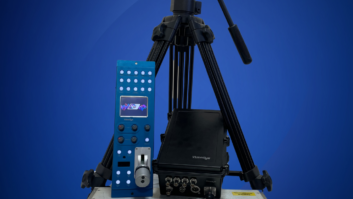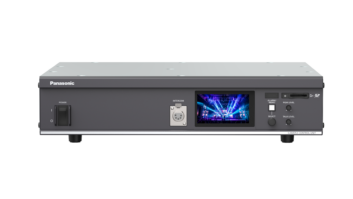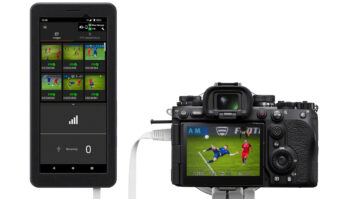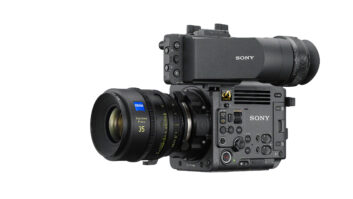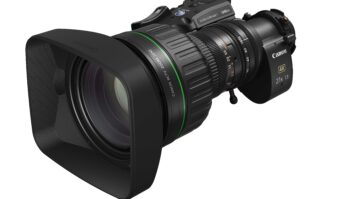A new camera system added to Fox Sports’ coverage of NASCAR racing in the US for the 2008 season called Gophercam is being installed within the track surface of NASCAR tracks and, according to Fox Sports CEO David Hill is the coolest camera ever. “No gophers were harmed and this is the most compelling shot I have ever seen in the history of sports,” said Hill at a press briefing prior to the recent running of the Daytona 500. “It reinforces the speed and precision at which the sport is raced,” writes Ken Kerschbaumer.
The cameras give viewers a sense of what it would be like to be on the track as cars zip by and even over the camera. It has been tried before but previous systems installed a spring mechanism so the camera would recede into the track as cars drove over it. The new version is mounted below track level and makes use of prisms and other innovations to ensure that only a small metal plate with the lens is above the surface.
Michael Davies, Fox Sports director of engineering, says the idea for Gophercam was born last season by ‘NASCAR on Fox’ director, Artie Kempner. Fox trialled an SD version of the camera in Texas, Charlotte and Delaware and showed video of the coverage to Hill. “He decided almost immediately that he wanted to have four of them at every track,” says Davies.
Each Fox Sports NASCAR race will feature four of the cameras with one placed in the apex of each turn. Designed by Inertia Unlimited, a specialty US-based camera manufacturer, the system makes use of Sony one-third inch CMOS chip imagers.
The cameras, designed closely with NASCAR Media Group, are nearly flush with the track and have a height that is similar to a highway reflector. The discrete footprint ensures the camera does not endanger drivers while also minimising potential damage to the camera that results from being run over thousands of times by more than 40 cars traveling at nearly 400 kilometers per hour.
The lens, pointing straight down the track at oncoming race cars, is mounted within a small metal plate mere centimeters high. Images pass through the lens and bounce off the prism to the camera located below the surface in a small cylinder that looks like an oil can. Because the prism reverses the images an Ensemble Designs frame synchroniser is required to flip images back to normal. A Bradley Engineering-designed remote control panel controls gain and colour.
Each camera requires a four-inch core to be drilled into the track and a cylinder to be placed within the core. The camera’s cylinder is then bolted into the cylinder (which itself is attached via asphalt adhesive) and connected via a 15-pin connector by seven wires that are stacked on top of each other in a one-eighth inch channel.
“We use a concrete saw and a core driller to run the conduit from the asphalt to the infield grass and then over a short wall where the fibre then takes over,” says Silverman. The need for a very thin channel also required finding a camera with a 15-pin connector because 20-pin connectors would require a wider channel and would only be able to pass the signal 200 feet.
Jeff Silverman, owner of Inertia Unlimited who designed the camera, began developing the system last year for some standard definition trials to see if the view was compelling. Once Fox Sports executives bought into the concept he then had to quickly build an HD version of the camera.
An AJA box converts the component signal to HD SDI and a Telecast Fiber HD POV link muxes audio, data, and video into two strands of fibre that run back to the compound to another Telecast box. The Telecast box then feeds the signal to the Fox Sports NASCAR production truck.
Silverman says the placement of the cameras on super speedways like that used for the Daytona 500 will be conservative and typically on the very inside portion of the track. “This is a multi-year project and we’re proceeding with an abundance of caution,” he says. “But on slower tracks we should be able to get more aggressive with the camera placement.” Testing data from tyre manufacturer Goodyear will also be used to find the ideal placement location right outside of the groove where most cars race.
Silverman is already looking towards new application of the technology. Major League Baseball broadcasters have expressed interest in using the camera system on the field, installing units at home plate, first base and on the pitchers mound.
